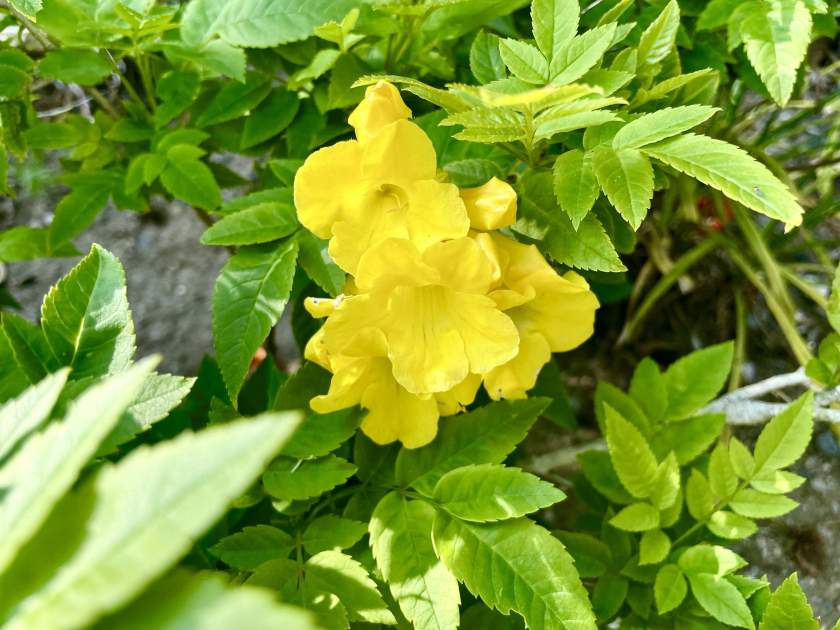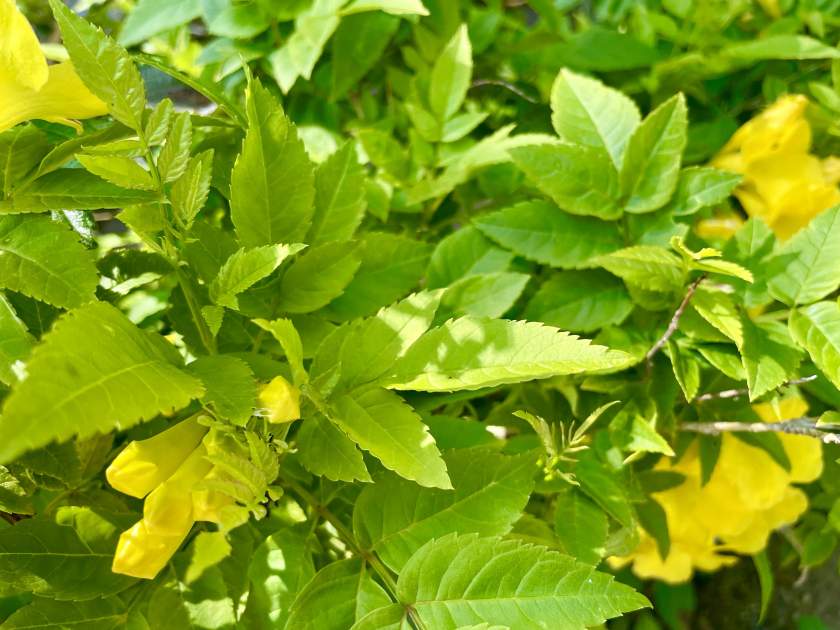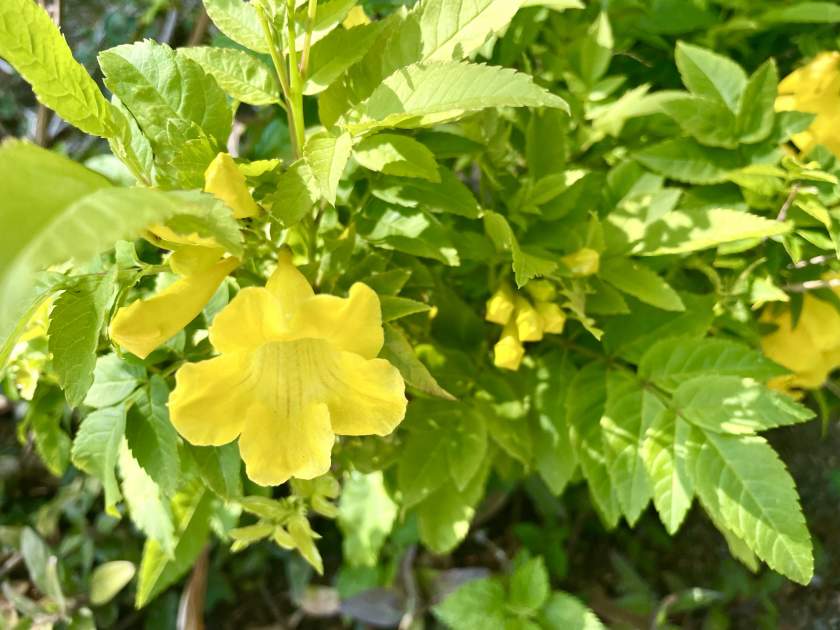Tecoma stans: Native Beauty with Vibrant Yellow Bells
Family Origin: Tecoma stans, commonly known as Yellow Bells, Yellow Trumpetbush, or Yellow Elder, belong to the Bignoniaceae family. This species of flowering perennial shrub is native to the Americas. Its remarkable beauty and versatility have made it the official flower of the United States Virgin Islands and the floral emblem of The Bahamas.
Native Habitat: Tecoma stans thrives in its native habitat, which includes the West Indies, Texas, New Mexico, and Florida, and stretches from Mexico to South America. It is well-adapted to a variety of ecosystems, from high-altitude temperate forests to xerophilous scrub and coastal regions. In its natural environment, Tecoma stans colonize disturbed, rocky, sandy, and cleared land, sometimes becoming an invasive weed. It favors dry and sunny regions of the coast.
Characteristics of Tecoma stans:
Growth Size and Leaves: Tecoma stans is a semi-evergreen shrub or small tree that can reach heights of 10 meters (30 ft). It features opposite odd-pinnate leaves composed of 3 to 13 serrated leaflets. These leaflets have glabrous surfaces and lanceolate blades, measuring 2-10 cm long and 1-4 cm wide.
Vibrant Yellow Bell-Shaped Flowers: One of the most striking features of Tecoma stans is its brilliant display of trumpet-shaped flowers in a vibrant yellow hue. The large, showy blossoms form clusters at the ends of branches, attracting bees, butterflies, and hummingbirds. Flowering occurs throughout the year, enhancing the garden’s beauty and biodiversity.
Cultivating Tecoma stans:
Sunlight: To ensure optimal growth and abundant flowering, Tecoma stans prefers full sun exposure. Place it in a location that receives ample sunlight.
Watering: During the active growth period, provide regular irrigation, allowing the soil to dry out between waterings. Once established, Tecoma stans exhibits drought tolerance and requires less frequent watering.
Soil: Tecoma stans thrives in fertile, organically rich, well-drained soils. While it can adapt to various soil types, it flourishes best in soils that offer good drainage.
Pest and Disease Management: Tecoma stans is generally resistant to pests and diseases, making it a low-maintenance plant. However, regular monitoring is advised to address any potential issues promptly. Implement appropriate pest control measures, such as using insecticidal soaps or natural remedies, if necessary.
Propagation:
Tecoma stans can be propagated through seeds or cuttings, offering multiple options for expanding your garden with this beautiful shrub.
- Seeds: Sow the seeds in a light, well-drained potting mix during late summer or early autumn. Provide moist soil and light shade. Germination typically occurs within three weeks.
- Cuttings: Take softwood or hardwood stem cuttings and apply a rooting hormone to promote root development. Place the cuttings in a well-draining potting mix and maintain consistent moisture. Rooting usually takes about three weeks.
Additional Uses and Benefits:
Apart from its ornamental value, Tecoma stans serves other purposes:
- Rustic Architecture and Furniture: The wood of Tecoma stans finds use in rustic architecture, furniture construction, and even the crafting of canoes. It provides strength and durability for various structures.
- Medicinal Properties: Tecoma stans is employed in traditional medicine for its potential medicinal properties. It is known to be used against diabetes and diseases of the digestive system. Its leaves and flowers are utilized in remedies for various ailments.
- Fodder and Livestock Grazing: Tecoma stans offers desirable fodder when growing in fields grazed by livestock. It provides valuable sustenance for animals and supports agricultural practices.
Discover the radiant beauty and resilience of Tecoma stans as it graces your landscape with its vibrant yellow blossoms and captivating presence. Whether used as a focal point or a stunning addition to shrub borders, this shrub’s year-round display will enchant both you and the visiting pollinators. Additionally, appreciate its diverse benefits, from its versatility in rustic craftsmanship to its potential medicinal applications and contribution to livestock grazing.






